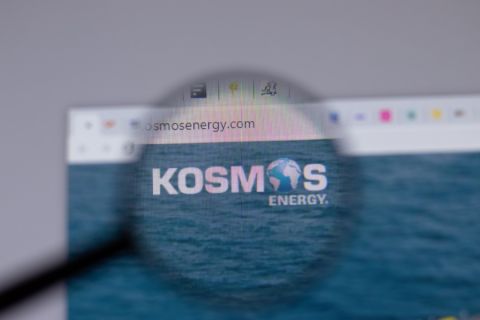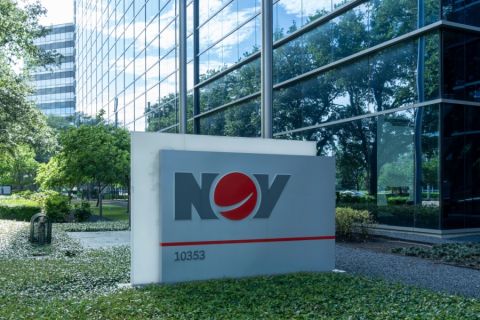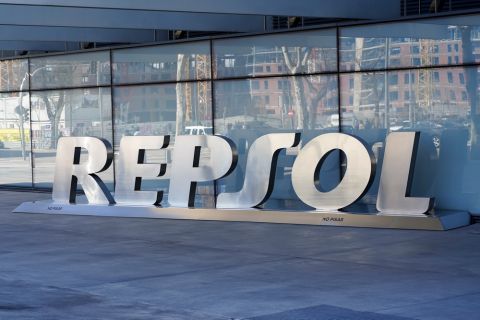
(Left) Duane Germenis , (middle) Chris Harich, (right) Jordan Blum. "When we’re not recycling water, we have to dispose of that water. We see those costs to me, as the operator of those assets, are starting to come into parity with each other,” Harich said at Hart Energy's Nov. 15 Executive Oil Conference. (Source: Hart Energy)
MIDLAND, Texas - Innovation and increasing cooperation are pushing water recycling toward a more affordable option among energy producers.
Operators still know the cheapest way to get rid of salted water used in fracking “is to put it back in the ground where it came from,” said Chris Harich, COO at XRI, an energy-focused water management company. “But we know that we can be a better steward.”
While currently, it’s cheaper to dispose of the water used in fracking operations, it’s not a long-term solution in the Permian, which draws water from the Ogallala Aquifer.
“We’re starting to see cost come in parity with SWDs (saltwater disposal wells),” Harich said at Hart Energy’s Nov. 15 Executive Oil Conference. “We also have a huge network of midstream assets. When we’re not recycling water, we have to dispose of that water. We see those costs to me, as the operator of those assets, are starting to come into parity with each other.”
All basins are different, Harich said. He and Duane Germenis, president of consulting firm Intelligent Water Solutions, estimated that the price per barrel of recycled water in the Permian is approaching $1.50/bbl or less. However, cost is not the only factor driving a growing recycling industry in the area. As the center of North American oil and gas production, Permian Basin companies are dealing with a massive amount of water.
“If we can get it to that beneficial reuse state, for a lot of companies right now that's their driver,” Harich said.
Besides providing a better use of water in a dry region, the industry is also paying attention to the safety factors of extensive fracking. Germenis noted the U.S. Geological Survey recorded a 5.3 magnitude earthquake in Loving County, Texas, on Nov. 8. According to The Associated Press, the quake could be felt hundreds of miles away, although no injuries or damage was reported.
The water load and safety factors are driving further interest in technology that will make recycling water easier, Germenis said.
“Ten years ago, somebody was telling me they were going to use a DAF — dissolved air flotation — unit
out in the Permian,” he said. “I went, ‘really?’ And sure enough, it has really taken off.”
DAF units and traditional media filtration has been prominent in recycling operations Germenis said. New types of technology, such as desalination mechanisms driven by solar power, are becoming available. Permeable membranes to separate clean and salty water are also being developed.
Costs for recycling are falling thanks to economies of scale, Harich said.
“Pre-COVID, people were not sharing assets. We were pretty private about everything that we did,” he said. “Coming out of COVID, asking one supermajor to collaborate with another supermajor on
recycling this barrel is happening today.”
The water recycling industry is also looking at what to do with the materials left over after cleaning up wastewater. Harich said that chemical companies have been able to extract metals out of the dirty water and, in some areas, lithium.
“When we first shipped oil to Houston, we were getting asphalt, gasoline, diesel fuel, polyethylene for instance … paint products, pharmaceuticals, it just goes on and on and on,” Harich said. “I think we'll see the same with water, but it's going to be a minute to get there.”
Recommended Reading
E&P Highlights: April 29, 2024
2024-04-29 - Here’s a roundup of the latest E&P headlines, including a new contract award and drilling technology.
Kosmos Energy’s RBL Increased, Maturity Date Extended
2024-04-29 - Kosmos Energy’s reserve-based lending facility’s size has been increased by about 8% to $1.35 billion from $1.25 billion, with current commitments of approximately $1.2 billion.
Barnett & Beyond: Marathon, Oxy, Peers Testing Deeper Permian Zones
2024-04-29 - Marathon Oil, Occidental, Continental Resources and others are reaching under the Permian’s popular benches for new drilling locations. Analysts think there are areas of the basin where the Permian’s deeper zones can compete for capital.
NOV Announces $1B Repurchase Program, Ups Dividend
2024-04-26 - NOV expects to increase its quarterly cash dividend on its common stock by 50% to $0.075 per share from $0.05 per share.
Repsol to Drop Marcellus Rig in June
2024-04-26 - Spain’s Repsol plans to drop its Marcellus Shale rig in June and reduce capex in the play due to the current U.S. gas price environment, CEO Josu Jon Imaz told analysts during a quarterly webcast.





